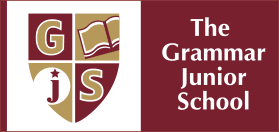CODE OF BEHAVIOUR
Promoting Positive Behaviour
The School aims to promote and encourage positive behaviour by creating a warm and safe environment. This is encouraged through a social context that fosters prosocial behaviours in which there is a concern about rights, feelings and empathy for others. At the same time inappropriate behaviour is discouraged.
The School empowers and motivates pupils to learn. Pupils are encouraged to develop personal and social skills as well as positive attitudes and values. Self-esteem is promoted by providing recognition, praise and reward of achievement. The School ethos is understood and practiced by all its members. It combats bullying and maintains an orderly environment by responding to inappropriate behaviour. Effective educational and emotional support is provided for pupils with learning and/or behavioural difficulties by the Special Education and Educational Psychology Services.
The School focuses on behavioural expectations that are positively stated and easy to remember.
![]() for Success
for Success
![]() for Member of the GJS family
for Member of the GJS family
![]() for always caring, sharing, being kind
for always caring, sharing, being kind
![]() for Respect
for Respect
![]() for taking responsibility of your own actions
for taking responsibility of your own actions
Responding to Inappropriate Behaviour
To ensure that pupils can be educated in a secure and orderly environment, it is sometimes necessary to respond to inappropriate behaviour by using previously agreed consequences. It is important that children know in advance what will happen if they choose not to follow the school rules and that it is the behaviour that is criticized and not the children themselves. Possible consequences must be related to the inappropriate behaviour and they need to be quick, reasonable and certain to occur when a pupil decides to misbehave. The child’s age is always taken into consideration. Where disciplinary problems arise, parents will be involved at an early stage rather than as a last resort.
Procedures for inappropriate behaviour
- The pupil is made aware that his/her behaviour is unacceptable.
- The teacher may ask the pupil to stay for a few minutes at the end of class to discuss his/her behaviour.
- The pupil will fill in a reflective form about his/her behaviour.
- Seating arrangements in class may be changed.
- A pupil may be temporarily separated from his/her group, within the classroom, for a set time.
- A note or comment may be written in the homework exercise book for the parents to sign. Teachers may also send an email or call the parents.
- Teachers will record incidents of inappropriate behaviour and actions taken in response to it in the Class Behaviour Log.
- The Class Behaviour Log is “blank” at the beginning of each school year.
In case of repeated and longstanding instances of inappropriate behaviour the procedure is as follows:
- The Head Teacher is informed.
- Parents are called to the school to meet with the Head Teacher and Director of the School.
It is the parents’ responsibility that the pupil behaves in an acceptable manner in the future.
Conclusion
This code will be reviewed at regular intervals. Its success depends on pupils being familiar with the school rules and regulations. The cooperation of the staff and the full support of parents is required to implement the code of behaviour consistently and effectively.
